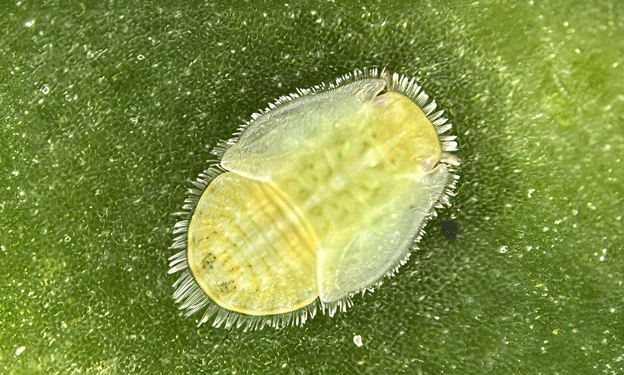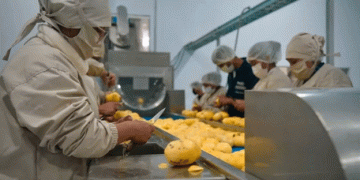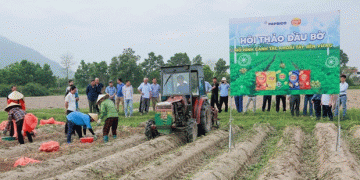In 2008, New Zealand’s potato industry was blindsided by the arrival of the Tomato Potato Psyllid (TPP), a tiny insect that became a massive problem. TPP carries Candidatus Liberibacter solanacearum, a bacterium that causes zebra chip disease in potatoes. This disease creates unattractive, bitter black marks on tubers, severely reducing crop quality. By 2021, Canterbury’s potato crops were losing 5.7% of their yield to zebra chip, raising concerns of a possible industry collapse.
The fight against this pest took a positive turn when Lincoln University researchers, led by Associate Professor Clive Kaiser, began a targeted and holistic pest management approach. Kaiser, who joined Lincoln University from Oregon State University, applied years of expertise in integrated pest management to combat the TPP infestation.
The key to controlling TPP was understanding the insect’s lifecycle. For over a decade, industrial potato growers had been spraying pesticides targeting adult TPP. However, Kaiser discovered that adults made up only 5% of the population, while eggs and nymphs accounted for 95%. By focusing pesticide applications on the eggs and nymphs, the overall population was reduced, and the need for excessive spraying diminished.
But precision targeting wasn’t the only strategy Kaiser employed. He also introduced biocontrol agents, including pirate bugs, minute pirate bugs, and brown Tasman lacewings, which naturally prey on TPP. These beneficial insects were released in hot spots, including the heavily infested African boxthorns along Canterbury’s Rakaia River. The impact was profound—TPP populations plummeted, and the number of infected potato plants fell to less than 0.01%.
Beyond these natural control measures, another innovative approach involved the use of calcium. Trials conducted in collaboration with the United States Department of Agriculture showed that calcium-treated plants deterred TPP from feeding. The insects avoided calcium-enriched plants, preventing them from spreading Liberibacter and infecting new crops. Although the exact mechanism is still unknown, the results are promising, and field trials in New Zealand are set to begin this season.
Calcium offers an environmentally friendly alternative to traditional pesticides. It acts as a deterrent rather than a pesticide, which could significantly reduce chemical use in agriculture. This approach aligns with the broader goal of reducing the amount of pesticides applied to crops, thereby cutting costs for farmers and minimizing chemical residues in food.
Although zebra chip disease has been brought under control in Canterbury, Kaiser cautions that Liberibacter is unlikely to be eradicated entirely. The bacterium has never been cultured in a lab, limiting the ability to conduct research aimed at completely eliminating the disease. However, with the methods developed by Lincoln University researchers, the threat of zebra chip has been dramatically reduced, giving potato farmers renewed confidence in their future.
The battle against the Tomato Potato Psyllid and zebra chip disease highlights the importance of innovative pest management techniques. By combining targeted pesticide use, biocontrol agents, and new deterrents like calcium, Lincoln University researchers have helped save Canterbury’s potato industry. As these methods continue to be refined and adopted, farmers can expect healthier crops, fewer chemical inputs, and a more sustainable future for New Zealand’s potato industry.






